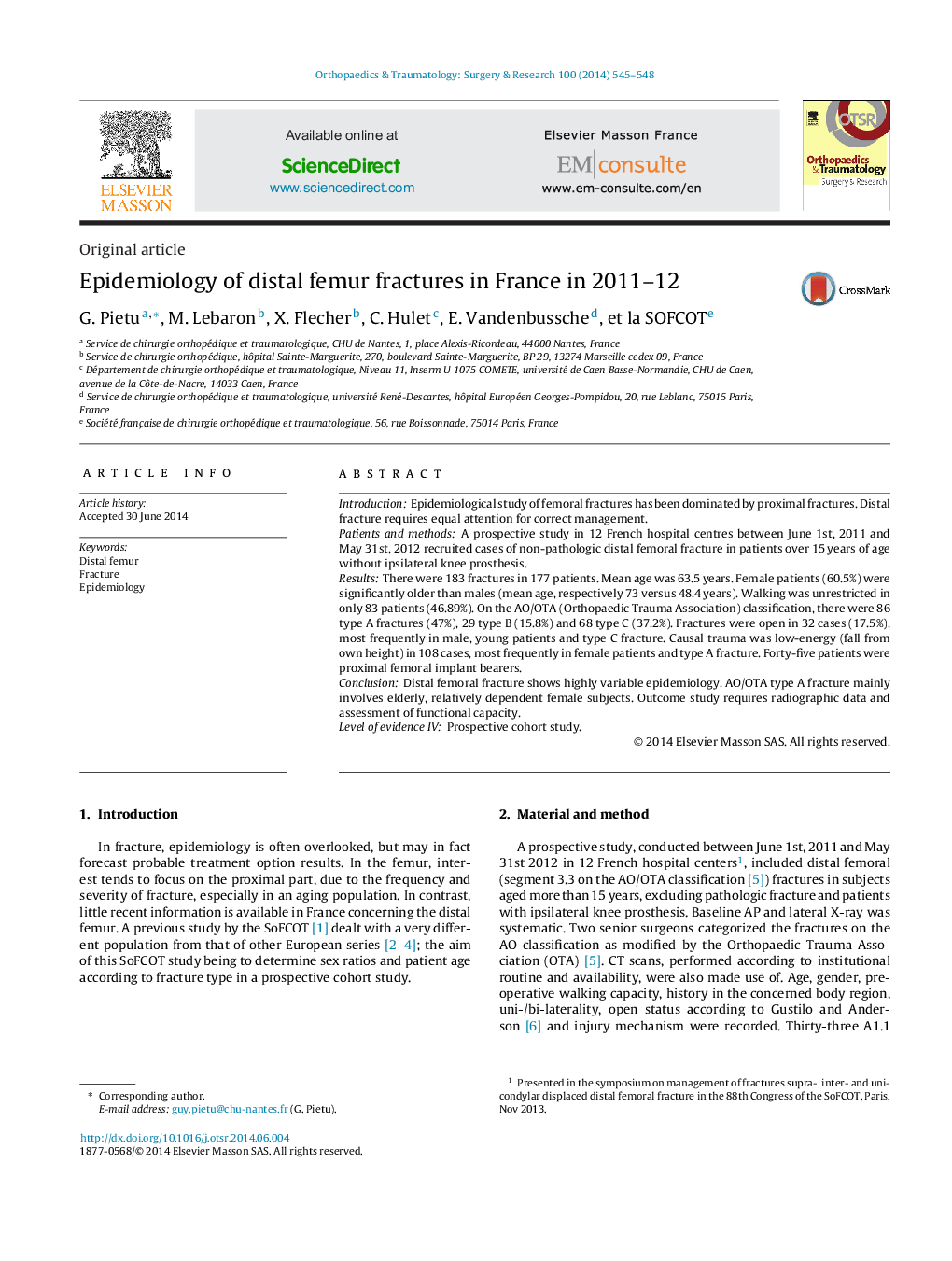| Article ID | Journal | Published Year | Pages | File Type |
|---|---|---|---|---|
| 4081384 | Orthopaedics & Traumatology: Surgery & Research | 2014 | 4 Pages |
IntroductionEpidemiological study of femoral fractures has been dominated by proximal fractures. Distal fracture requires equal attention for correct management.Patients and methodsA prospective study in 12 French hospital centres between June 1st, 2011 and May 31st, 2012 recruited cases of non-pathologic distal femoral fracture in patients over 15 years of age without ipsilateral knee prosthesis.ResultsThere were 183 fractures in 177 patients. Mean age was 63.5 years. Female patients (60.5%) were significantly older than males (mean age, respectively 73 versus 48.4 years). Walking was unrestricted in only 83 patients (46.89%). On the AO/OTA (Orthopaedic Trauma Association) classification, there were 86 type A fractures (47%), 29 type B (15.8%) and 68 type C (37.2%). Fractures were open in 32 cases (17.5%), most frequently in male, young patients and type C fracture. Causal trauma was low-energy (fall from own height) in 108 cases, most frequently in female patients and type A fracture. Forty-five patients were proximal femoral implant bearers.ConclusionDistal femoral fracture shows highly variable epidemiology. AO/OTA type A fracture mainly involves elderly, relatively dependent female subjects. Outcome study requires radiographic data and assessment of functional capacity.Level of evidence IVProspective cohort study.
